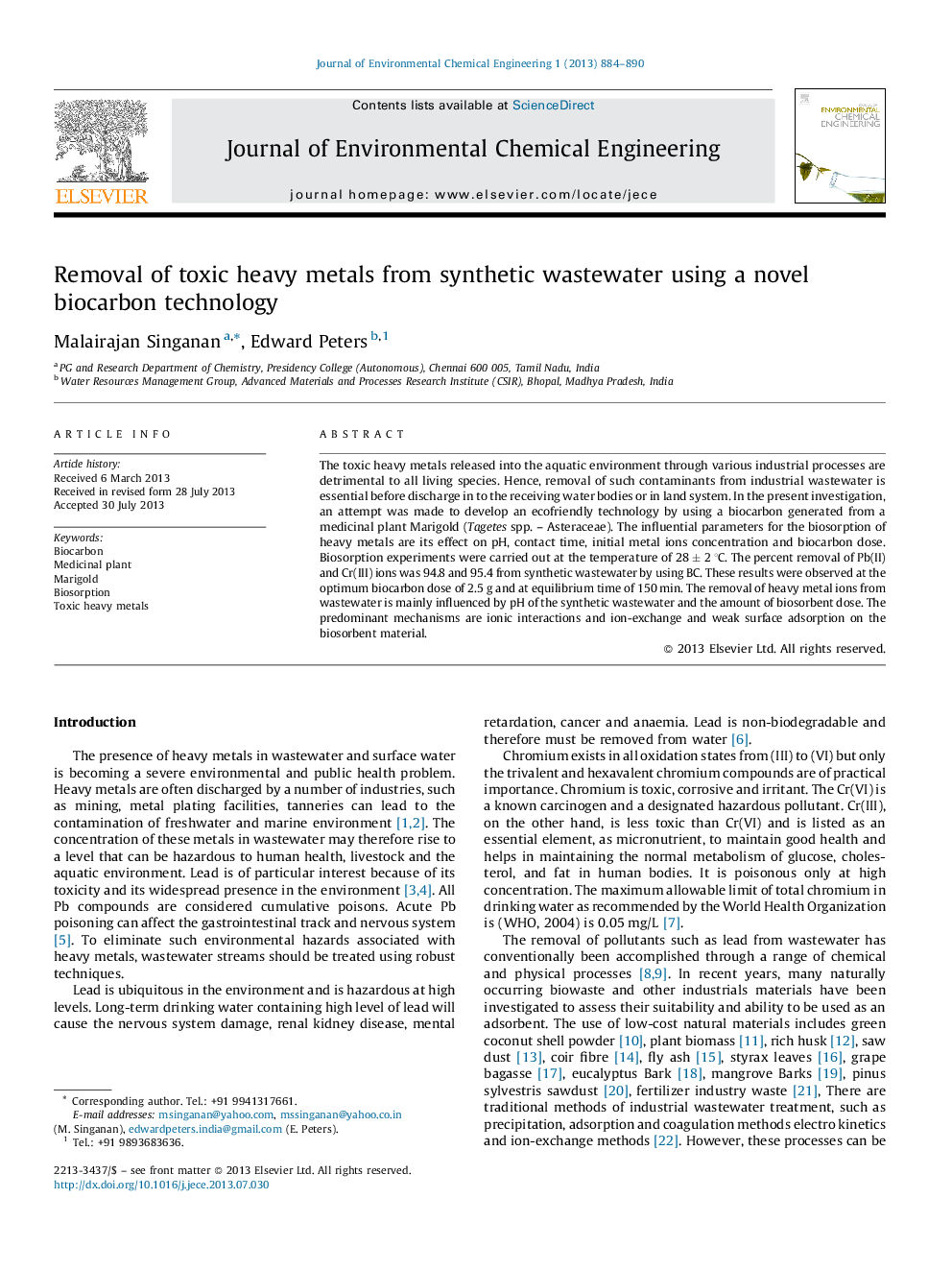| Article ID | Journal | Published Year | Pages | File Type |
|---|---|---|---|---|
| 222479 | Journal of Environmental Chemical Engineering | 2013 | 7 Pages |
The toxic heavy metals released into the aquatic environment through various industrial processes are detrimental to all living species. Hence, removal of such contaminants from industrial wastewater is essential before discharge in to the receiving water bodies or in land system. In the present investigation, an attempt was made to develop an ecofriendly technology by using a biocarbon generated from a medicinal plant Marigold (Tagetes spp. – Asteraceae). The influential parameters for the biosorption of heavy metals are its effect on pH, contact time, initial metal ions concentration and biocarbon dose. Biosorption experiments were carried out at the temperature of 28 ± 2 °C. The percent removal of Pb(II) and Cr(III) ions was 94.8 and 95.4 from synthetic wastewater by using BC. These results were observed at the optimum biocarbon dose of 2.5 g and at equilibrium time of 150 min. The removal of heavy metal ions from wastewater is mainly influenced by pH of the synthetic wastewater and the amount of biosorbent dose. The predominant mechanisms are ionic interactions and ion-exchange and weak surface adsorption on the biosorbent material.
